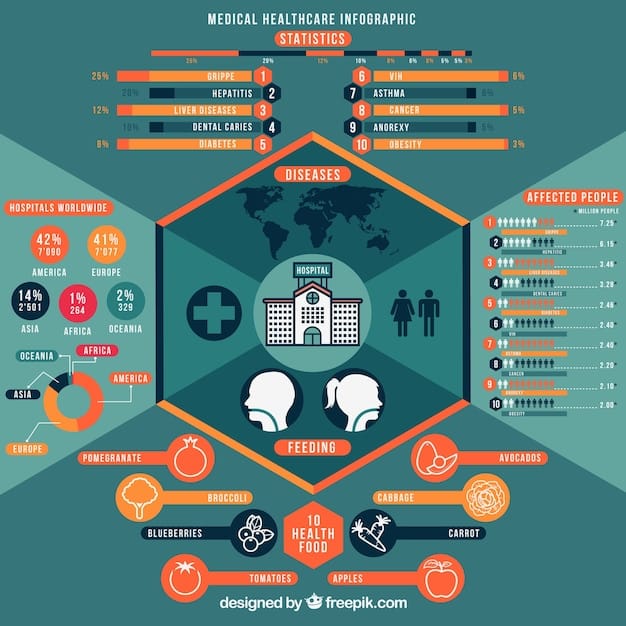Low-Code Automation: Revolutionizing US Business Innovation

The rise of low-code automation platforms is revolutionizing how US businesses innovate, enabling them to rapidly develop and deploy solutions with minimal coding, accelerating digital transformation and enhancing competitiveness.
The speed of business is accelerating, and US companies need to innovate faster to stay competitive. The rise of low-code automation platforms offers a powerful solution, empowering businesses to build and deploy applications and automate processes with unprecedented speed and agility.
Understanding Low-Code Automation
Low-code automation platforms are visual development environments that allow both business users and IT professionals to build applications and automate processes without requiring extensive coding knowledge. These platforms provide pre-built components, drag-and-drop interfaces, and declarative programming models, simplifying the development process.
Key Features of Low-Code Platforms
Low-code platforms offer a range of features that facilitate rapid application development and automation. These include visual modeling tools, pre-built connectors, and workflow engines that streamline the creation of business solutions. The intuitive nature of these platforms democratizes development, allowing more individuals within an organization to contribute to digital transformation initiatives.
Benefits of Low-Code Automation
Adopting low-code automation can lead to significant benefits, such as faster time-to-market, reduced development costs, and increased business agility. By enabling rapid prototyping and deployment, low-code platforms allow companies to quickly adapt to changing market conditions and customer needs.
- Reduced development time and costs
- Increased agility and responsiveness
- Empowered citizen developers
- Improved collaboration between business and IT teams
In conclusion, understanding the core features and benefits of low-code automation platforms is crucial for US businesses looking to enhance their innovation capabilities and drive digital transformation.

Driving Innovation in US Businesses
Low-code automation platforms are playing a pivotal role in driving innovation across various industries in the US. By enabling businesses to quickly develop and deploy custom solutions, these platforms are fostering a culture of experimentation and continuous improvement. They allow companies to address specific business challenges and capitalize on emerging opportunities with unprecedented speed.
Empowering Citizen Developers
One of the key advantages of low-code automation is its ability to empower citizen developers—business users with limited coding experience who can now create applications and automate processes themselves. This democratization of development frees up IT resources, allowing them to focus on more complex and strategic projects.
Accelerating Digital Transformation
Low-code platforms are accelerating digital transformation initiatives by providing a faster and more cost-effective way to modernize legacy systems and create new digital experiences. Businesses can leverage these platforms to automate workflows, improve data management, and enhance customer engagement, driving significant improvements in operational efficiency and business performance.
Low-code automation empowers teams to iterate rapidly, test new ideas, and deploy solutions swiftly. This agility is invaluable in today’s fast-paced business environment, where companies must quickly adapt to changing market dynamics and customer expectations.
Ultimately, driving innovation through low-code platforms involves fostering a collaborative environment where citizen developers and IT professionals work together. This synergy leverages the unique skills and perspectives of both groups to deliver powerful and innovative solutions.
Real-World Applications in the US Market
Across the US market, numerous companies are successfully leveraging low-code automation platforms to address critical business needs and achieve tangible results. These applications span various industries, including finance, healthcare, manufacturing, and retail, demonstrating the versatility and broad applicability of low-code technology.
Case Study: Financial Services
In the financial services sector, low-code platforms are being used to automate customer onboarding, streamline loan processing, and improve regulatory compliance. By automating these processes, financial institutions can reduce operational costs, improve customer satisfaction, and enhance risk management.
Case Study: Healthcare
Healthcare providers are using low-code automation to automate appointment scheduling, manage patient records, and improve care coordination. These applications are helping to reduce administrative overhead, improve patient outcomes, and enhance the overall patient experience.
These real-world applications showcase the tangible benefits of low-code automation, including increased efficiency, reduced costs, and improved business outcomes. By embracing low-code technology, US businesses can unlock new levels of innovation and competitiveness.

Overcoming Challenges in Adoption
While the benefits of low-code automation are clear, US businesses may encounter several challenges during adoption. These challenges include security concerns, integration issues, and a lack of internal expertise. Addressing these challenges requires a strategic approach that focuses on careful planning, robust security measures, and ongoing training.
Security Considerations
Security is a top priority when adopting low-code automation platforms, especially given the sensitive data that many US businesses handle. It’s essential to choose platforms with robust security features, such as data encryption, access controls, and compliance certifications. Regular security audits and penetration testing can help identify and address potential vulnerabilities.
Integration with Existing Systems
Integrating low-code platforms with existing IT systems can be complex, particularly if those systems are outdated or poorly documented. A well-defined integration strategy is essential, including careful planning, thorough testing, and the use of APIs and connectors to ensure seamless data flow between systems.
- Prioritize security from the outset
- Develop a comprehensive integration strategy
- Invest in training and support
- Foster a culture of continuous improvement
Overcoming these challenges requires a commitment to continuous learning and improvement. By addressing security concerns, integration issues, and a lack of expertise, US businesses can successfully adopt low-code automation platforms and reap the full benefits of this transformative technology.
Best Practices for Successful Implementation
Successful implementation of low-code automation platforms requires a strategic approach that aligns with business goals and addresses potential challenges. By following best practices, US businesses can maximize the benefits of low-code technology and drive significant improvements in operational efficiency and business performance.
Defining Clear Objectives
Before embarking on a low-code automation project, it’s essential to define clear objectives and key performance indicators (KPIs). This ensures that the project aligns with business goals and that its success can be measured effectively. Examples of KPIs include reduced development time, increased process efficiency, and improved customer satisfaction.
Choosing the Right Platform
Selecting the right low-code platform is crucial for success. US businesses should carefully evaluate different platforms based on their specific needs and requirements. Factors to consider include the platform’s ease of use, scalability, security features, integration capabilities, and vendor support.
By following these best practices, US businesses can successfully implement low-code automation platforms and achieve significant improvements in operational efficiency and business performance.
Future Trends in Low-Code Automation
The field of low-code automation is rapidly evolving, with several key trends poised to shape its future. These trends include the integration of artificial intelligence (AI), the rise of hyperautomation, and the increasing adoption of cloud-based platforms. Understanding these trends is essential for US businesses looking to stay ahead of the curve and leverage the full potential of low-code technology.
Integration of Artificial Intelligence (AI)
The integration of AI into low-code platforms is enabling businesses to create more intelligent and automated solutions. AI-powered features, such as natural language processing (NLP) and machine learning (ML), are being used to automate complex tasks, improve decision-making, and enhance customer experiences.
The Rise of Hyperautomation
Hyperautomation is an approach that combines low-code automation with other advanced technologies, such as robotic process automation (RPA) and AI, to automate a wide range of business processes. This holistic approach enables businesses to achieve end-to-end automation, driving significant improvements in operational efficiency and business performance.
By staying informed about these future trends, US businesses can better prepare for the future and leverage the full potential of low-code technology to drive innovation and growth.
| Key Point | Brief Description |
|---|---|
| 🚀 Speed & Agility | Low-code accelerates development, enabling quicker responses to market changes. |
| 💡 Citizen Developers | Empowers non-technical staff to build and automate, freeing IT for complex tasks. |
| 💰 Cost Reduction | Reduces development costs and accelerates digital transformation for US businesses. |
| 🤖 AI Integration | Future trend where AI enhances low-code platforms for smart, automated solutions. |
FAQ
Low-code automation platforms are development environments that use visual interfaces with minimal coding required. They enable faster application development and process automation.
They provide user-friendly interfaces and pre-built components, allowing business users with limited coding experience to create their own solutions.
Financial services, healthcare, manufacturing, and retail are among the industries that benefit greatly due to faster process automation.
Challenges include ensuring security, integrating with existing systems, and overcoming a potential lack of in-house expertise on the platforms.
Hyperautomation combines low-code with other technologies like AI and RPA to automate complex, end-to-end business processes more comprehensively.
Conclusion
In conclusion, the rise of low-code automation platforms represents a significant opportunity for US businesses to accelerate innovation, reduce costs, and improve agility. By embracing these platforms and addressing the associated challenges, companies can unlock new levels of efficiency and competitiveness in today’s rapidly evolving business landscape.





